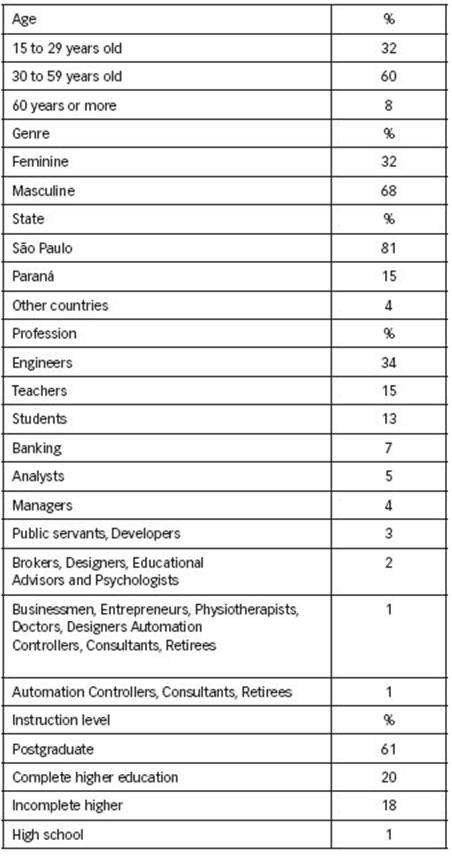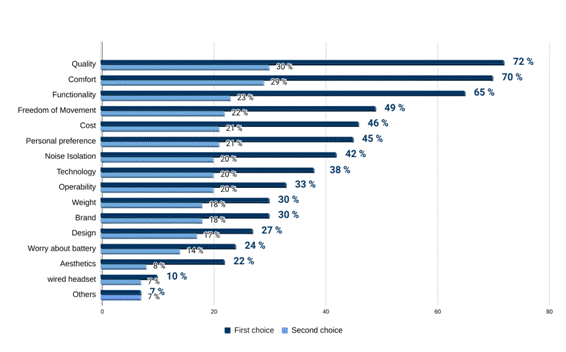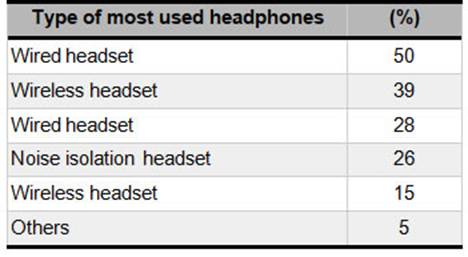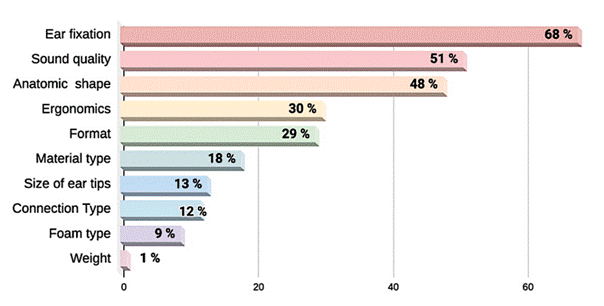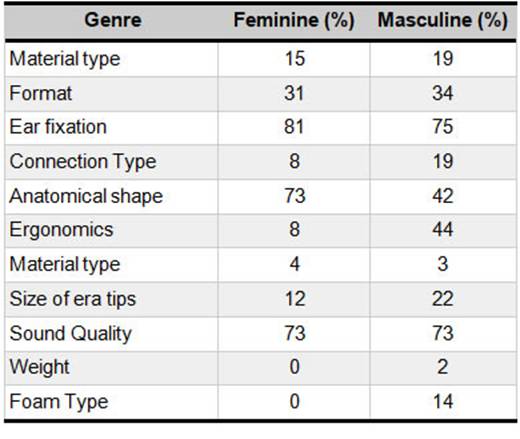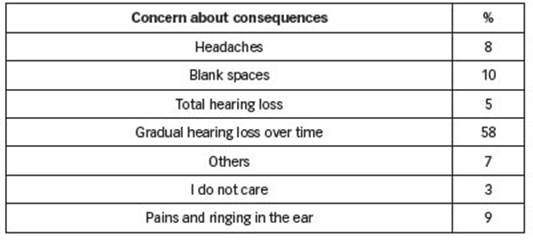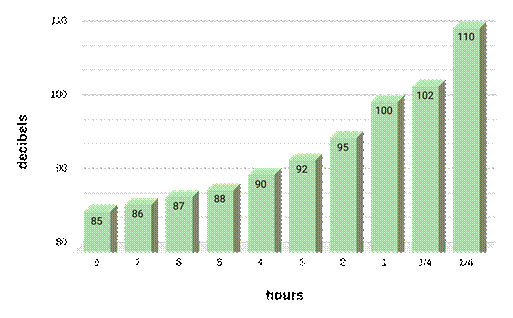Introduction
The headphones, listening devices, in their origin were very different from the compact models and didn't have the audio quality available that we have today. They were used as accessories for the first telephone and radio devices, as the technique of the time did not allow audio amplification through speakers, being used to receive communication. Initially, headphones were used in just one ear, weighing up to 4.5 kg. Over time they have improved. In 1891, in-ear headphones were patented. In 1930, their use was popularized, emerging the first portable model, with better quality, no longer restricting them to radios and telephone exchanges. In 1958, the first stereo headset was produced, the technology then became popular. From then on, the models improved more and more and in 1997, a new technological resource was incorporated that allowed the use to listen to music, without the use of wires, known as Bluetooth. Renowned industries in the market, such as Apple®, made important contributions to the popularization of these devices, with compact and ergonomic models bundled with their devices, followed by AirPods®, in addition to modern headphones (Mota, P.H., 2021).
There are several flavors of headphones on the market, each with a specific feature that respect ergonomic design standards. (Pereira, De Araujo, De Sousa, De Moura & Silva, 2022).
Regardless of the brand or sound quality, headphones are divided into four basic categories: 1- Earphones: simpler type, usually included with cell phones and audio devices. They are small, light, and fit reasonably in the ears, but they do not isolate the sound. Therefore, they allow it to leak and the user to hear ambient sounds along with the music. 2- In-ear: also called “in-ear” (inside the ear), these are the headphones that come with those little rubbers of various sizes, so that they are directly fitted in the ear canal. They are also small and lightweight, but their design allows sound to be better isolated and does not leak, while also eliminating outside noise. As it is used inside the canals, they can bother some users and are not very suitable for use on the street, as you will not hear the sounds that surround you when walking. 3-Supra-ear headphones: the supra-ear headphones or "on-ear" (over the ear) are those with a larger size, usually fixed with a bow and that are positioned over the ears, but not fully cover them. Because of this, these headphones do not isolate sound, but they are less fragile than in-ear and in-ear headphones. Sound quality tends to be better than the first two and closer to the next on the list: the circumaurals. 4- Circumaural headphones: for a long time, the synonym of “headphone” was the circumaural headphones, also called “over-ear” (around the ear). These headphones fully cover the ears and completely isolate the sound, offering a better sound experience, even by supporting bigger and better components. On the downside, these headphones are quite large and tricky to carry, as well as being generally the most expensive (Gogoni, R.,2020)(Navarro,2021). However, the current scenario is constantly changing due to the innovations introduced (OECD/Eurostat, 2018), based on the needs and experience of users (Barcellos & Botura Jr., 2018), and even the mechanical structure of headphones may pass to be molded for each one separately through 3D printing. (Goulart Nishimura, 2018).
The social isolation, caused by the Covid 19 pandemic, made people develop their work in a home office system, which contributed to the use of headphones to rise significantly, inserted in the online universe of meetings, conferences, congresses, lives, classes, and family videos. (Sousa, Andrade, Braite, Rabelo, Oliveira, Souza, & Rissatto-Lago, 2021). Consequently, the noises coming from the home and the family environment become more striking, and the use of headphones has become a way to hide external noises and focus on concentration at work (Diosti, 2020).
Cognitive ergonomics emphasizes the attention we must pay to the environment when using the headphones, according to Diosti (2020),doctor Felippe Felix, from Universidade Federal do Rio de Janeiro, this affects the way we increase the volume during use and reinforces that in an environment that presents a lot of noise. Basically, people are induced to raise the earphone volume to muffle external noises from the street, the environment, cognitive ergonomics, and offers tips to minimize the problem, including the preference for headphones, which are not so close to the eardrum, especially with noise cancellation, hearing rest, every 30 minutes, rest for 5 minutes and so on, details that will help the user's well-being (Barreto, 2020).
Studies are being directed to this audience of users, as according to a warning from the World Health Organization, it is believed that 10% of the world population will have some hearing loss, and a good part of this audience will damage their hearing through exposure exaggerated to sounds (Silva, Teixeira, & Scharlach, 2018). Excessive use of the accessory for any activity can damage hearing and develop emotional problems such as anxiety and increased stress. The recommendation of experts is to limit the time to a maximum of 60 minutes per day, and with a volume less than 60% of the sound capacity of the device (Oliveira, Andrade, Carnaúba, Peixoto & Menezes, 2022). Therefore, it will be important for headphone users to obtain guidance on the intensity (the constant exposure to noise with a frequency higher than 85 decibels (dB)) that can cause damage, related to the time of use of the phone and its impacts on hearing health and emotional (FEBRE na pandemia, 2020). A relevant factor is to identify the design properties of Bluetooth headphones, within individual characteristics, gender, and ear shape, which are directly related to the perception of comfort, to the material used, which are ergonomically important issues (Chiu, et al., 2014).
For communication to occur efficiently, the voice of the sender and the listening of the receiver must be intelligible, with a high signal-to-noise ratio. The environment in which the user performs his activities does not always allow for a good understanding and can thus negatively interfere with productivity (Martins, 2005). The use of noise canceling headphones is an option to disregard ambient noises and encourage concentration in the home office (Marques, 2020), (FONE de ouvido, 2020).
The study was based on a literature review and a questionnaire, paying attention to the users' perception of habits, use, values, and the aggregating factors that affect the individualized choice of the device. In bibliographic studies on the subject, we find international articles that describe factors associated to physical ergonomics, related to anthropometry, motion sickness and cognitive ergonomics, directed towards the environment, the quality of communication through the headset (Cunha, Giselle, Merino, & Merino, 2015), but nothing directly related to the pandemic situation and the use of it, according to the types made available for use. The purpose of this work is to present the data of the research carried out with the headphone users that will be able to assist the designers in the elaboration of the device project, considering the usability and the choice factors in the perspective of the user's perception looking for the productivity and proper communication.
Materials and Methods
The basis of the study was the literature review on headphones, their origin, types, problems, and technologies, appropriate to their usability, choice criteria, preferences, and damage to health in a specific period. A questionnaire was designed to obtain data on the perception of users, as well as the identification of factors that influenced the preference of their choices, their priorities, and the consequences of the misuse of this technology. Second form, validation questionnaire, evaluating each question presented in the main questionnaire as to its clarity, adequacy and understanding, based on Alexandre's study (Alexandre & Coluci, 2011). The purpose of this questionnaire is to strengthen the reliability and the potential for understanding and comprehension of the second form applied as a means of analyzing the study and we had the participation of eight respondents. This validation questionnaire analyzes the Content Validity Index (CVI), which consists of calculating the number of grades 3, 4 given to the questions, divided by the total number of respondents. Only one of the questions was reformulated, as it presented an index lower than 0.9, an index not approved by the study.
The survey was made available online, by the Google Forms platform, to be completed between the dates 07/12/2021 to 07/24/2021. There was a total of 100 respondents who accepted the free consent term. In the characterization of respondents, we can identify that the device is present in the daily lives of 89% of respondents. The survey included users mostly living in the state of São Paulo (81%), in the state of Paraná (15%) and 4% living in other countries. (Table 1).
Table 1: Characterization of respondents.
Results
Following the data collection, many inputs were found that can be used to support the restructuring of the project and its design, designed according to the needs of its users.
The frequency of use of the headset points to an increase of 72% during the pandemic, due to the expansion of online activities. The choice of device follows criteria identified by users for the purchase of a primary and a secondary device. Criteria such as: quality (72%), comfort (70%), functionality (65%) were the most mentioned for the first choice of device, followed by freedom of movement (49%), corroborating the result obtained by Philips ® (Kurtz, 2020) which presents a preference for using a Bluetooth phone mainly for physical activities. Although the purpose of the two surveys were different, one focusing on use during the pandemic and the Philips® in physical activities, the results were practically the same.
Criteria such as cost are unconsciously associated and are presented as consequences of factors such as advanced technology, functionality, weight, and product quality (Ulhoa, Lima & Osiro, 2017). Headphones, justifying that this data does not imply disregard on the part of respondents as to their purchasing power.
For a second choice, criteria such as quality (30%), comfort (29%), functionality, freedom of movement, cost and personal preference are listed as predominant, as shown in Figure 1, a fact evidenced in the research presented by Philips® (2020), which indicates that 80% of users have 2 models of headphones for their daily activities. (Figure 1).
Figure 1: Preference, among the three factors chosen by users for first and second choicefor purchasing anatomical headphones (%).
The wired ear headset, among all those surveyed, is the most used model, daily by respondents (50%), (Table 2), a result also found in the survey requested by Philips® (Kurtz, 2020), regarding habits of consumers who point out that its use is the most common in Brazil.
Table 2: Most used headphones.
Fixing the earphone (68%) is the most indicated item, in relation to the perception of comfort, followed by sound quality (51%), anatomical shape (48%) and ergonomics (30%). These results corroborate (Ulhoa, Lima & Ossiro, 2017) whose study was carried out to identify priorities in device choice (Figure 2).
Anthropometry-related factors need to be considered regardless of the earphone type used by designers at the beginning of the project. In this way, it is possible to serve the public, regardless of the age, sex, and ethnicity of its potential users (Liu, 2008). The perception of comfort is extremely important for designers, capable of being predicted according to the concepts of anthropometry and ergonomics in the face of statistical studies (Stavrakos, Ahmed-Kristensen & Goldman, 2016).
Figure 2: Perception of factors related to comfort.
The anthropometry of the external ear directly impacts the fixation of the earphone and, consequently, the comfort items identified as a priority by both sexes, which differ in some criteria: the item ear fixation is flagged by both genders as the most important item, 81% and 75% respectively female and male, while the item sound quality coincides with 73% for both genders. Another item, such as anatomical shape, is evidenced by the female gender (73%) and ergonomics (44%) for the male gender (Table 3).
Table 3: Criteria for comfort, respecting individual perception of anthropometric differences in relation to gender.
There is concern about physical health consequences. Gradual hearing loss over time is the consequence that most concerns headphone users, and later pain or tinnitus, headaches, total hearing loss (Table 4).
Table 4: Concern about consequences.
In addition to the physical consequences mentioned above, there are reports of other discomforts during headphone activities, such as nausea and dizziness, leading to fatigue, as well as the need for frequent adjustments to match the volume to the time of use (Yoshimura & Borst, 2021).
Hearing health is closely related to the relationship "time of use x volume", as recommended by the Brazilian Society of Otology the limit for no harm to the user must be 85 decibels for 8 hours of use (Figure 3) (Boasczik, Kmita & Veronez, 2014).
Figure 3: Relation of Time and Decibels acceptable to health (Adaptation: Laws from Brazil, 2005
Possible hearing damage, proven through audiometric exams, may occur in 32% of users, if awareness regarding the time x volume combination is not carried out, with incorrect use being one of the most important factors to be observed according to the World Organization of Health (Stavrakos, Ahmed-Kristensen & Goldman, 2016). Many cell phones warn about the maximum volume allowed, so as not to damage the hearing, but do not warn about the volume and usage time, which is the combination that affects the health of their users.
Conclusions
The use of headphones was more frequent during the research period, due to factors of epidemiological restrictions, in which online activities, carried out for the purposes of work, study and leisure, were a plausible alternative, due to the need for isolation. In this scenario, the present study brought an analysis of device design, functionality, technology, and user perception, respecting physical and cognitive ergonomics, aiming to aid projects, by designs, regarding usability issues, choice factors from the user's perspective, as well as observing possible physical factors associated with the condition of the environment, which corroborate the fullness of communication and help productivity in areas where the device is used.
It is verified that the factors related to ear fixation, sound quality, anatomical shape and ergonomics are the most evident, according to the perception of the users, are the most evident factors related to comfort, anthropometric factors to be considered in the projects by the designers regardless of the type of headset to be used by the user, to serve the public according to age, gender and ethnicity.
The wired earphone is the most used model daily, and factors such as quality, comfort, functionality, followed by freedom of movement and cost stand out as relevant factors for purchasing both a main headphone and a secondary one. Purchasing power is not pointed out as a relevant factor, as cost is directly related to advanced technology, functionality, weight, and product quality. Noise isolation ranks in the seventh position preferred by users, as a facilitator of concentration, making the use of excessive volume unnecessary.
Gradual hearing loss is the biggest physical health concern, in addition to ringing in the ear, headaches, and total hearing loss.
The results demonstrate, in the perception of the users, important contributions such as comfort, sound quality, freedom of movement, fixation on the ear and anatomical shape, which are fundamental factors for designers in the elaboration of the production process and improvement of these devices, helping to prevent physical damage.
The study shows that about ⅓ of the respondents are putting their hearing health at risk, due to the association of two factors, high volume, and excessive time, proving the need for attention to the hearing health of these users.
The final conclusion of the research presented refers to the perception of usability and the main conclusions to be studied, related to comfort, health, safety and user satisfaction, articulating and connecting the various knowledges such as anthropometry, hearing health, ergonomics , technology, and sound quality to be part of the strategic design, from the design action of the device, physical ergonomics, together with the conditions of the environment in which it is used, cognitive ergonomics, which are key factors in adapting the equipment to the desired standards, focused on the physical and emotional health of its users.
Received: 20/09/2021
Accepted: 06/02/2023













